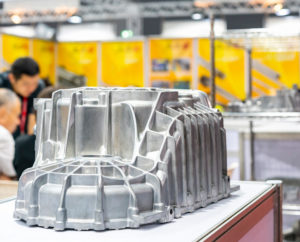Grinding discs are an essential tool in metalworking, construction, and other industries that require cutting, grinding, and shaping of materials. These discs are made of abrasive materials such as aluminum oxide, silicon carbide, and zirconia alumina that are bonded together with resins or vitrified materials. The result is a flat, circular disc that can be attached to a grinder or other power tool.
Grinding discs come in various sizes, shapes, and types to suit different applications. For instance, some discs are designed for heavy-duty grinding and cutting, while others are better suited for finishing and polishing. Additionally, some discs are compatible with specific materials such as stainless steel, concrete, or stone, while others are more versatile and can be used on a range of materials.
When using grinding discs, it is important to follow safety guidelines and wear appropriate protective gear such as gloves, goggles, and a dust mask. Improper use of Grinding disc can result in injury or damage to the workpiece. With proper use and maintenance, grinding discs can provide efficient and effective results for various applications.
Types of Grinding Discs
Grinding discs are an essential tool in metalworking, woodworking, and other industries that require the removal of material from a surface. There are several types of grinding discs available, each designed for specific applications. This section will discuss the three most common types of grinding discs: diamond grinding discs, silicon carbide discs, and aluminum oxide discs.
Diamond Grinding Discs
Diamond grinding discs are the most durable and efficient type of grinding disc. They are made from industrial-grade diamonds that are bonded to a metal disc. Diamond grinding discs are ideal for grinding hard materials such as concrete, stone, and ceramics. They are also used for grinding metal, but they tend to be less effective than other types of grinding discs for this application.
Diamond grinding discs come in a variety of sizes and shapes, including cup wheels, flat discs, and segmented discs. They are
typically used with angle grinders or floor grinding machines.
Silicon Carbide Discs
Silicon carbide discs are another common type of grinding disc. They are made from a combination of silicon carbide abrasive and a resin bond. Silicon carbide discs are ideal for grinding soft and non-ferrous metals such as aluminum, brass, and copper. They are also used for grinding ceramics, plastics, and composites.
Silicon carbide discs are available in a variety of sizes and shapes, including flap discs, fibre discs, and grinding wheels. They are typically used with angle grinders or bench grinders.
Aluminum Oxide Discs
Aluminum oxide discs are the most commonly used type of grinding disc. They are made from aluminum oxide abrasive and a resin bond. Aluminum oxide discs are ideal for grinding ferrous metals such as steel and cast iron. They are also used for grinding wood and other materials.
Aluminum oxide discs come in a variety of sizes and shapes, including flap discs, fibre discs, and grinding wheels. They are typically used with angle grinders or bench grinders.
In conclusion, choosing the right grinding disc for a specific application is crucial to achieving the desired results. Diamond grinding discs are the most durable and efficient, while silicon carbide discs are ideal for grinding soft and non-ferrous metals. Aluminum oxide discs are the most commonly used type of grinding disc and are ideal for grinding ferrous metals.
Safety and Usage
Safety Precautions
Grinding discs are powerful tools that can cause serious injuries if not used properly. It is important to follow these safety precautions to ensure safe usage:
Always wear appropriate personal protective equipment, including safety glasses, gloves, and a dust mask.
Inspect the grinding disc for any cracks or damage before use. Do not use a damaged disc.
Ensure that the disc is properly mounted and tightened before use.
Keep bystanders and other workers at a safe distance while using the tool.
Never use the tool in an explosive or flammable environment.
Proper Handling and Operation
To ensure efficient and safe usage of grinding discs, it is important to follow these guidelines:
Use the correct disc for the job. Different discs are designed for different materials and applications.
Use the tool at the proper speed and with the correct pressure. Excessive force or speed can cause the disc to break or wear out quickly.
Keep the tool and disc clean and free of debris to ensure proper performance.
Use the tool in a well-ventilated area to avoid inhaling dust and debris.
Maintenance and Storage
Proper maintenance and storage of grinding discs can extend their lifespan and ensure safe usage:
Store discs in a dry, cool place away from direct sunlight and moisture.
Inspect discs regularly for any signs of wear or damage. Replace worn or damaged discs immediately.
Clean discs after each use to remove any debris or residue.
Follow the manufacturer's instructions for disc maintenance and replacement.
By following these safety precautions, handling and operation guidelines, and maintenance and storage recommendations, workers can safely and effectively use grinding discs.


